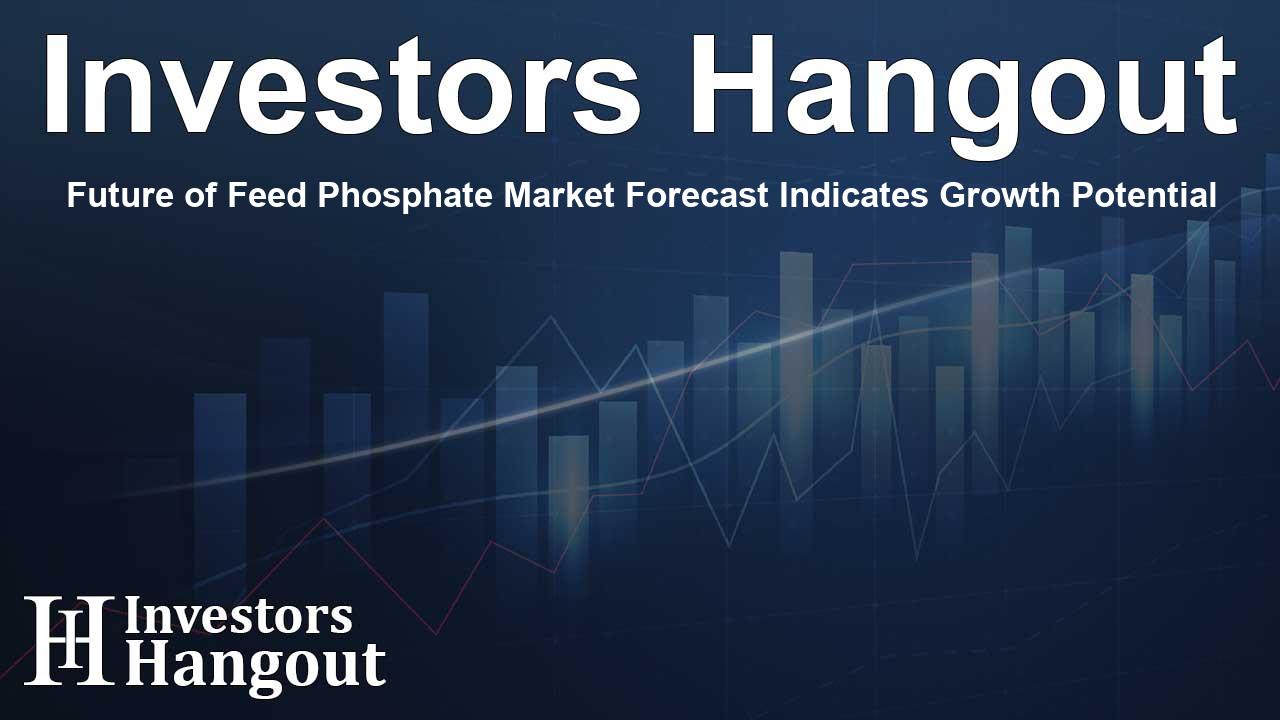Future of Feed Phosphate Market Forecast Indicates Growth Potential

Future of Feed Phosphate Market Forecast Indicates Growth Potential
The Feed Phosphate Market is poised for a dramatic increase, projected to reach a remarkable USD 3.22 billion by 2030. This impressive growth is bolstered by rising demands for animal protein and advancements in livestock management practices. As the global population continues to expand, the need for high-quality, nutritious food sources becomes increasingly vital.
Market Dynamics Driving Growth
Key factors contribute to the burgeoning Feed Phosphate Market, which includes factors such as the increasing demand for animal protein across various demographics. Expansion in livestock production practices is pressing farmers to adopt more efficient feeding strategies that boost the health and productivity of animals. Enhanced feed formulations that incorporate feed phosphates guarantee better nutritional balance, leading to improved overall growth rates in livestock.
Innovation in Livestock Nutrition
Continual technological advancements are reshaping the landscape of livestock nutrition. Producers are increasingly focused on creating customized feed solutions tailored to meet the specific dietary needs of different animal species. This precision in formulation addresses the growing demand for well-balanced diets that include essential minerals and phosphorus.
The Role of Sustainable Practices
Sustainable farming practices are gaining traction, with phosphate producers dedicating resources to more environmentally responsible mining and production methods. The industry recognizes that over-extraction can deplete vital resources, prompting a shift toward sustainability that is both economically and ecologically beneficial.
Animal Health and Feed Efficiency
With a sharper focus on animal health, the feed phosphate market reflects a trend that aligns increased phosphorus intake with improved growth rates and enhanced immune function. Farmers and livestock producers are under pressure to optimize feeding costs while maximizing yield, with feed phosphates emerging as a solution that aids in achieving this goal.
Regulatory Impact on Feed Ingredients
Regulatory frameworks are evolving, pushing producers to reduce antibiotic usage and reinforce the use of feed additives that comply with strict health standards. This regulatory push creates a heightened demand for reliable sources of feed phosphates, known for supporting critical animal growth indicators.
Technological Advancements Shaping the Market
Recent innovations in feed additive manufacturing processes have made significant impacts on phosphate utilization and overall feed efficiency. Improvements, such as enzyme supplementation to enhance phosphate digestibility, allow for a smarter approach to livestock feeding. Furthermore, the rise in digital platforms for managing feed production enhances transparency and responsiveness in the supply chain.
Key Regions Driving the Feed Phosphate Demand
The Asia-Pacific region is currently at the forefront of the Feed Phosphate Market, supported by significant meat consumption trends and booming livestock industries, particularly in countries like China and India. Following this region are North America and Europe, where established farming practices continue to drive market growth.
Market Segmentation Insights
The Feed Phosphate Market comprises several segments categorized by type, livestock, form, source, and application. Dicalcium and monocalcium phosphates are prevalent due to their high bioavailability, while poultry and swine segments dominate livestock consumption due to intensive farming operations and high meat demand.
Market Leaders and Innovations
Major players shaping the Feed Phosphate landscape include renowned companies recognized for their commitment to research, development, and market expansion. Companies are focusing on innovative product launches and strategic partnerships to enhance their market positions and leverage new growth areas.
Frequently Asked Questions
What is the forecasted market size of the Feed Phosphate Market in 2030?
The forecasted market size of the Feed Phosphate Market is USD 3.22 billion in 2030.
Who are the leading players in the Feed Phosphate Market?
The key players include major companies committed to animal nutrition and sustainability practices.
What are the main drivers for the Feed Phosphate Market?
Demand for protein-rich diets and the rise of sustainable farming practices are significant drivers of market growth.
Which region leads in the Feed Phosphate Market?
The Asia-Pacific region currently leads due to its high livestock production and meat consumption rates.
What applications are most prevalent in the Feed Phosphate Market?
Bone development is a leading application area within the market, crucial for the growth of young and high-yielding animals.
About The Author
Contact Evelyn Baker privately here. Or send an email with ATTN: Evelyn Baker as the subject to contact@investorshangout.com.
About Investors Hangout
Investors Hangout is a leading online stock forum for financial discussion and learning, offering a wide range of free tools and resources. It draws in traders of all levels, who exchange market knowledge, investigate trading tactics, and keep an eye on industry developments in real time. Featuring financial articles, stock message boards, quotes, charts, company profiles, and live news updates. Through cooperative learning and a wealth of informational resources, it helps users from novices creating their first portfolios to experts honing their techniques. Join Investors Hangout today: https://investorshangout.com/
The content of this article is based on factual, publicly available information and does not represent legal, financial, or investment advice. Investors Hangout does not offer financial advice, and the author is not a licensed financial advisor. Consult a qualified advisor before making any financial or investment decisions based on this article. This article should not be considered advice to purchase, sell, or hold any securities or other investments. If any of the material provided here is inaccurate, please contact us for corrections.
